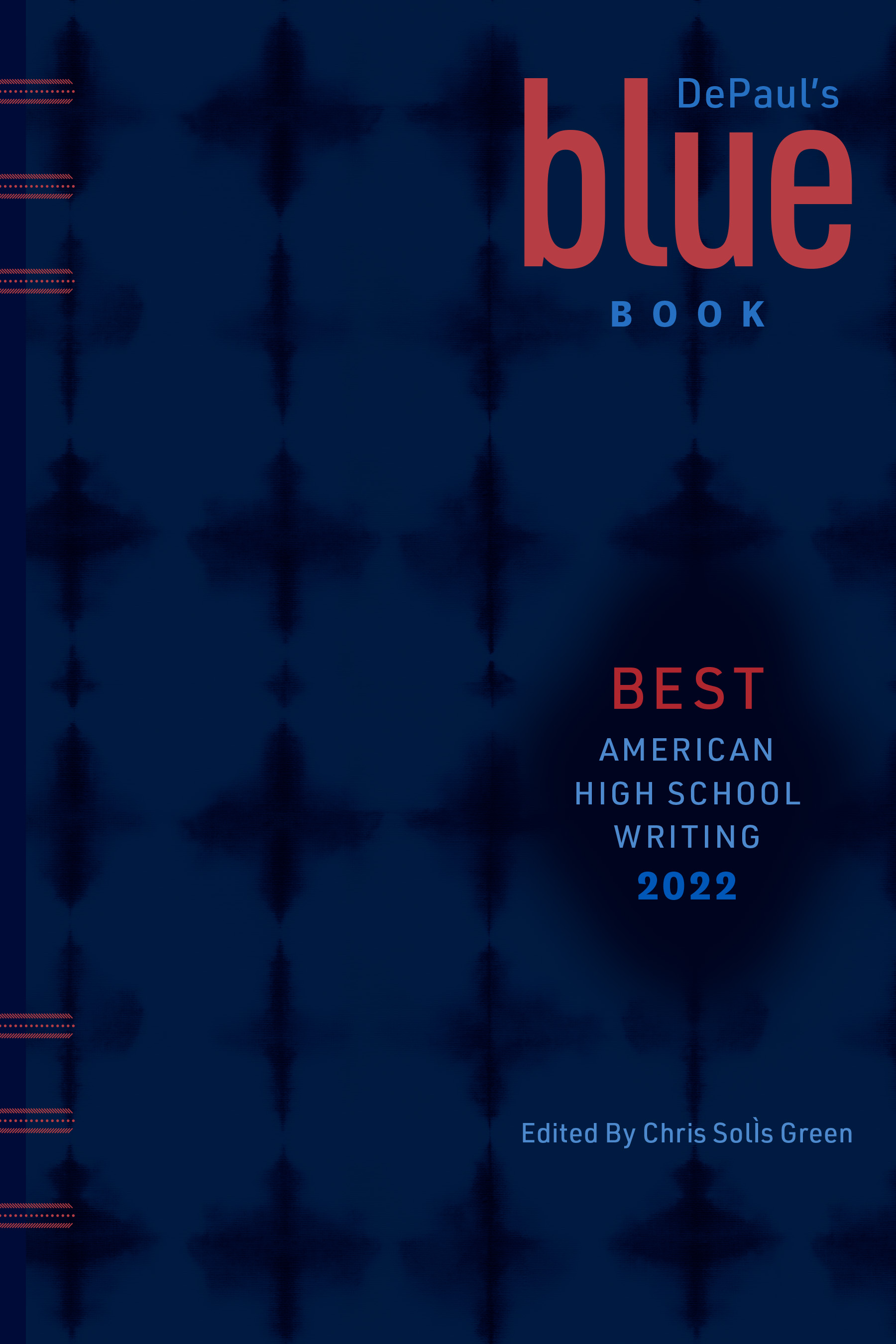 Chris Solís Green, a DePaul English faculty member, is the editor of "DePaul’s Blue Book: Best American High School Writing 2022." (DePaul University/Jeff Carrion)
Chris Solís Green, a DePaul English faculty member, is the editor of "DePaul’s Blue Book: Best American High School Writing 2022." (DePaul University/Jeff Carrion)In an effort to compile America’s best high school writing into one publication, DePaul English faculty member Chris Solís Green and student editors from English, journalism, and writing, rhetoric & discourse have spent the past year connecting with thousands of schools across the U.S., seeking outstanding submissions in both English and Spanish from emerging young writers. The result is a collection of 55 works from young poets, fiction writers, essayists and journalists hailing from 11 states and the Dominican Republic. “DePaul’s Blue Book: Best American High School Writing 2022” was released in print Sept. 2.
The national edition builds on a project Solís Green started in 2020 to honor the best works by Illinois’ high school writers. Thanks to the efforts of Miles Harvey, chair of the university’s English department, and Margaret Storey, associate dean in the College of Liberal Arts and Social Sciences, DePaul is supporting the initiative through a $100,000
Academic Growth and Innovation Fund Grant.
“It’s really a joy to celebrate young people’s writing,” Solís Green says. “I can only imagine what it would be like to receive an email that your work was chosen as one of the best in the country. I know it would have meant the world to me when I was younger. As an editor, it’s incredibly satisfying to send those emails to young people all over the country. That’s sort of the engine and emotion behind the whole project.”
 “DePaul’s Blue Book: Best American High School Writing 2022” is a collection of 55 works from young poets, fiction writers, essayists and journalists hailing from 11 states and the Dominican Republic. (Courtesy of Chris Solís Green)
“DePaul’s Blue Book: Best American High School Writing 2022” is a collection of 55 works from young poets, fiction writers, essayists and journalists hailing from 11 states and the Dominican Republic. (Courtesy of Chris Solís Green)Published works touch on a wide range of themes, such as what it’s like to be part of a family and community; navigating race, ethnicity and religion; and what being American means. There are also humorous pieces such as the opening work, a poem titled “We’re Vomiting at the Bowling Alley,” by Bella Rotker from Interlochen Arts Academy in Interlochen, Michigan.
“It’s amazing what teenagers are capable of creating. This anthology is a testament to the talent that’s in our young people,” Solís Green says.
Writers from coast-to-coast submitted their work, with the final 55 works coming from young authors representing California, Florida, Illinois, Michigan, Missouri, Nebraska, New York, Ohio, Pennsylvania, Texas and Washington. Illinois authors are featured 12 times throughout the publication, including 10 from the Chicagoland area. In addition, more than 100 finalists and the titles of their submitted works are listed at the back of the anthology.
Solís Green served as editor of the “Blue Book” and collaborated with a team of four graduate student associate editors, two undergraduate student associate editors, a student web designer and two faculty advisors, Lisa Dush from College of Liberal Arts and Social Sciences and Jason Martin from College of Communication. The student staff came together from across the College of Liberal Arts and Social Sciences, College of Communication, and the Jarvis College of Computing and Digital Media.
“Our DePaul students are getting hands-on experience as editors,” Solís Green says. “They are reaching out to high schools, connecting with the young writers, reading the submissions and offering editing advice. It’s a wonderful experience they can take into their post-college careers.”
Allie Dulabaum, an English major with a concentration in creative writing, served as one of the publication’s two undergraduate associate editors. Along with her fellow undergraduate associate editor, Lilly Groth, Dulabaum read at least 600 pieces to help decide which ones would fit the anthology.
“Knowing that we gave a platform to students whose stories or art would perhaps only stay in the classroom or literary journal has been fulfilling. I feel honored to be a part of something that might inspire young writers to continue writing,” Dulabaum says.
A free digital flipbook of the anthology is available on the
Blue Book website. Solís Green and his team have also printed 4,500 copies that are available free of charge to anyone. To receive a print version of the “Blue Book,” you can order via the
website. Submissions for next year’s issue are being
accepted online now through Dec. 31.
Russell Dorn is a manager of news and integrated content in University Communications.